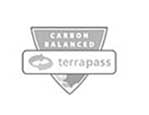Focusing Just on R-Value
Are we beating a dead horse here? I don’t think so and here’s why. Once you go back out there, you’ll see R-value time and time again. It’s hypnotic. It can easily sway you to going back to comparing apples to bananas.
There’s more to insulation performance than just R-value. Keep that in mind, and ask how the insulation performs against air leaks, moisture, mold, and pests.
Neglecting the Whole System
The walls and ceilings, roofs and crawlspaces in a building make up a complex system. Let’s call it an organism. There’s even more to it because you have heating and cooling ducts, air handlers, air conditioners, vapor barriers and more exotic surprises to think about.
It can be very confusing. It can cause you to think you need a doctorate in building science just to figure it out. Just remember the vast majority of contractors are not building scientists. They do what they do: if they’re spray foam contractors, spray foam is the answer. If they do cellulose, cellulose is the answer.
The truth is most of this is pretty logical and fairly simple and straightforward. You just need to avoid neglecting the whole system – it’s not just a wall or an attic. They’re parts of a complex ballet.
Houses Must Breath
We’ve all heard this one countless times, right? Ask your average contractor and he’ll probably tell you the same thing. Let’s think about what this means.
It means that air from outside must come in and air inside must go out. Now, you don’t draw your breathing air from the electrical sockets in your home, do you? Presumably you go out through a door, open the windows when it’s nice, vent your dryer and stove, and so on. That’s enough opening to let in clean fresh breathable air for you and your family and let out the moisture your body expels.
So what besides you needs to breathe in your home? The insulation that absorbs water of course!
Therefore, if you have the cheaper insulations, you’re forced to leave enough room in your walls for air to escape and outside air to come in. So, in the winter the air you heated needs to escape and the cold outside air needs to come in. In the summer the air you just cooled needs to escape and the warm air outside needs to come in. All to dry out the wet insulation!
Yikes. This doesn’t sound reasonable at all! And do you remember what crushes R-value in cheaper insulations?
Air and moisture! Convection! It’s a deadly circle that will absolutely cost you tens of thousands of dollars in energy over your lifetime. That doesn’t include the costs to redo your insulation time and time again as it molds.
Insulation Should be Cheap
How did we get this belief? Homes are definitely not cheap. Energy is no longer cheap and won’t be for at least 50 years. Why do we expect the very things that control and contain this energy in our homes and buildings to be cheap?
It must be that energy was once so inexpensive. Customers tell us every day about how their builder used no insulation or the cheapest possible (imagine fiberglass in a house next to the ocean where the wind whips the spray through the wood and into the insulation).
The cheaper insulations offset only a small cost of energy so it made sense. Back then, energy was cheap. Therefore a larger investment in insulation back then would take longer to be paid back in energy savings. Plus, America is pretty late to the green party so very few people cared if a house was energy efficient or not.
Do your insulation once and do it right. It’s not something you see every day and once the drywall is up you won’t want to take it back down.
Misunderstanding Payback Periods
This is a huge one. I had a consumer recently tell me that 2 years was too long to get all his money back. If he understood Payback periods, he’d understand that he was turning down a 50% return on his money.
Now, investments that return 50% every year are EXTREMELY RARE and frankly quite exotic. The S&P used to average 8%. Homes used to gain 3% a year. So here is someone who thinks 50% is too low because he doesn’t understand investments.
The truth is a 50% return on an investment in your building’s insulation is possible. But let’s look at other common scenarios:
Time until your investment is paid off Rate of Return
36 months / 3 years: 33%
48 months / 4 years: 25%
60 months / 5 years: 20%
72 months / 6 years: 16%
84 months / 7 years: 14%
96 months / 8 years: 12%
108 months / 9 years: 11%
120 months/ 10 years: 10%
Even if it took 10 years to pay for itself (and it’s often shorter than that), investing in the right insulation outperforms almost every other investment over that same time period.
The standard payback is usually between 3-4 years. That means that the proper investment can yield somewhere between 25 -33%. I wish there were more investments out there like that. That’s because I can’t stuff my 401k into my home!
It’s a limited amount of money I can, or need to, put into my home’s insulation. And I’m not really investing in insulation per se, I’m investing in avoiding energy costs and my home’s comfort and value.
There’s another thing to think about here. It’s important to say the right insulation. Most people add insulation based on R-value and never get substantial savings. Why?
Air and moisture lower the cheaper insulation’s ability to control Conduction. And we know that the cheaper insulations can’t stop the convection that is already undercutting their performance. Adding more of them isn’t going to stop the problems plaguing them! That’s like adding more wood to the fire.
Not Trusting Yourself
Insulating a building with the right insulation can seem like a big challenge. However, turning over the responsibility to someone else is not going to solve the problem. In fact it can make it worse, or it can just cost a lot and not give the desired performance.
The truth is no one cares about your money more than you. You! Likewise no one cares more about your home, your project, whether you save energy or have a comfortable home more than you. YOU.
And guess what else. No one can live up to your standards and how you want it done more than you.
There are exceptional builders out there. There are exceptional contractors, handymen, insulation companies, energy auditors, and others out there. At the end of the day, these exceptional companies still work on your behalf, based on what you’ve told them, and try to make you happy.
Making your building comfortable, efficient, and quiet is something that’s not hard if you make the right choices.
Not Making a Choice
Many people look at the dizzying options out there and give up. There’s so much conflicting information they have no way to sort it out. You do have a way because you have this guide. You have people you can call. But they don’t. And very often they choose to do nothing rather than make a mistake.
So they leave the walls empty of insulation, or they go only with the cheapest stuff they can find. Or they leave the mold in the attic. They don’t fix the problems costing them hundreds or thousands of dollars each year.
So, even though they fall behind where they could be each and every month after, they are ahead of doing the wrong thing and falling even farther back.
Choose to fix the problems bothering you. Make the decision to stop wasting thousands on energy, or listening to your neighbor’s band practice, or suffering stains on your ceiling from wet, moldy, attic insulation. Stop sacrificing comfort and good air quality. This is easier than you think.
Choosing Only on Price
In a world of thinking R-values are King and confusion between options, most people default to price. That’s a disaster. Why? Because low price insulations are often the very sources of the problems people are trying to solve.
Mold, moisture, high energy bills, noises, rodents and insects, drafts, allergies, worries. These are the problems people want to solve with insulation. When they choose on price it has NOTHING to do with addressing any of these problems.
What’s the net result? A huge waste of money and they’re no closer to solving the problem that’s driving them to action in the first place. Yikes. I hate to even think about it.
Avoiding the 8 Mistakes
I know that getting the results you really want is what it’s all about, I also know that getting a properly sealed and insulated building helps you get there from here. If you’re curious about how easy it can be to seal the attic, one of the leading culprits in homes, check out this VIDEO. Studies show up to 35% of the waste happens right there!









